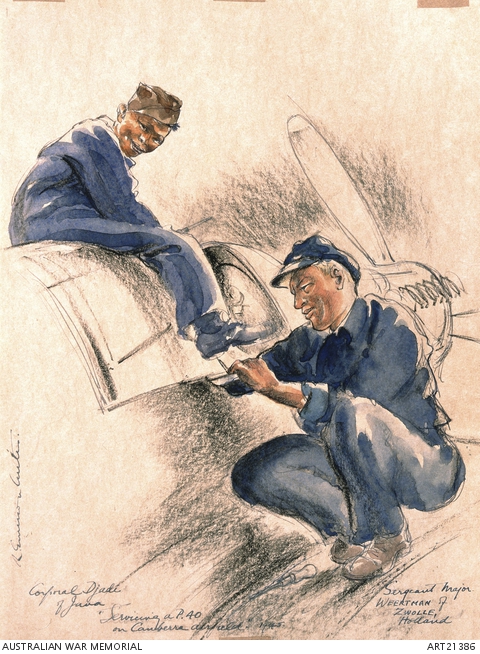RAAF Station Canberra
Although the RAAF was established in 1921, it had no operational presence in Canberra for nearly 20 years. A temporary camp was established in 1927, near the present airport, for the pilots who were to fly at the opening of Parliament House. On the day, Duntroon graduate Flying Officer Charles Ewen died when his aircraft crashed on a hill in front of the House.
RAAF Station Canberra was established on 1 April 1940. The aerodrome was renamed Fairbairn in 1941 in honour of the late Minister for Air and Civil Aviation, James Fairbairn, who was killed in an aircraft crash near the airfield on 13 August 1940.
Among other things, RAAF Station Canberra operated as a base for anti-submarine patrols. When Japanese prisoners escaped from the Cowra prisoner-of-war camp, aircraft from Fairbairn were used to search for the 500 escapees, of whom 334 were recaptured. After the fall of Java to the Japanese, the base also became home to three squadrons of the Netherlands East Indies Air Force. These were composite squadrons with Dutch, Javanese, and RAAF personnel.
In early 1943, Women’s Auxiliary Australian Air Force (WAAAF) started undergoing the same training as men to take on vital roles in the RAAF Meteorological Section. Margaret Gillam enlisted in Sydney and would have completed at minimum a 14-week training course. A further two levels of training were offered. This type of work attracted volunteers who were university graduates, especially those who had studied scientific subjects.
R. Emerson Curtis: Aircraftwoman M. Gillam, Meteorological Office, Canberra
A Javanese airman, Corporal Djadi, and a member of the Dutch air force, Sergeant Major Weertman, service an American Curtiss P-40 Kittyhawk aeroplane.


